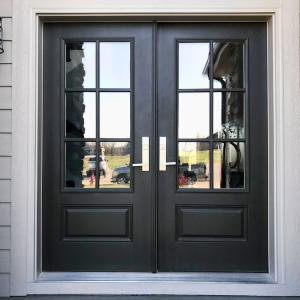People that have never had to replace their windows before might not know what to expect. A lot of people might think that measuring a window is the easiest and most straightforward part of the entire window installation. How hard can taking two easy measurements possibly be? Taking wrong measurements can end up in disastrous results for your window installation, and learning how to measure replacement windows the right way will go a long way in ensuring your windows will stand the test of time.
The thing about windows is that they come in a variety of different shapes, designs, and sizes. Each window in your home is designed to fit inside that exact opening, so accurate measurements play a huge role in making sure your window will fit precisely.
How To Measure Replacement Windows
The tiniest mistake in the measurement of your windows can cause the entire installation to be thwarted off, and it always helps to have a guide when you’re learning how to measure a window.
While you are only required to measure the height and width of a window, you’ll also need to make sure that the accuracy of those measurements is spot on. It should take a total of six measurements.
For the width measurement, you’ll be measuring from the left jamb to the right jamb. You’ll also measure from the top and bottom jams. To get the height measurement of your window, start from the head and work your way down the window sill on each side.
Do a little research on the different parts of windows so you’ll know where you’re measuring from and what spots to measure to. Starting or finishing your measurements at the wrong spot can cause your measurements to be completely off, and you don’t want that to happen. If you end up measuring too far past the window jambs, then you run the risk of your window is too large to fit inside the existing window opening.
The majority of homes have windows that are of many different styles and sizes. That means you’ll have to take different measurements for each and every one. If you have windows that don’t have headers, you’ll be measuring from the top of the drywall all the way to the bottom of the window sill. If you don’t have trim on the bottom of the window sill, you’ll be measuring from one part of the drywall to the next.
If you have windows with sliding sashes, the middle measurements will be where each sash connects near the middle of the window. After all six measurements are done, you’ll resort to the shortest measurements for the width and height of each window. Some people might think that you should go with the average measurement of all of the measurements that you took, but that’s incorrect.
What Do I Do With The Window Measurements?
The first step of replacing your windows is getting an estimate of the size of each rough opening. Once that is finished, you’ll need to consider a couple of other things:
- The style of window you’re wanting
- What direction you’re going to be placing the window
- What room you’re going to be installing the window in
- If there are any unforeseen challenges that you might run into
After gathering up all of this information, your window contractor will be able to provide you with a more accurate quote for installation. The more information you give them, the more accurate the quote is. Sometimes it also helps to give the contractor your budget so that they aren’t recommending windows that are way overpriced for your liking.
Getting a window contractor to your house is the best way to approach the situation. While it does help to speak to one inside a showroom, a full in-home inspection and consultation is much more effective.
While the contractor is inspecting your windows, they might be able to tell you about any other performance or functionality issues to be aware of. They might bring samples of certain materials to show you and they can assist you in answering any questions you might have. In some cases, they might also recommend that they can repair your windows instead of fully replacing them. This might be a breath of fresh air for some people because window repair is cheaper than full window replacement.
Measurements
It’s always essential to get accurate measurements for any type of home renovation project you’re considering. No contractor will ever tell you that ballpark estimating measurements is the way to go. If you’re initially unsure of the measurements you’ve taken, consider taking them again so you’re completely sure that they are correct.
Issues that can arise from erroneous measurements are:
- Windows won’t function properly
- Cold and drafty air will seep into your windows
- Lowered energy efficiency
- Mold
- Leaks
- Cracks
- Moisture buildup on your windows
- Safety concerns
It’s always best to get a professional window contractor to do your measurements if you aren’t sure how to do them. This will save a world of headaches later down the road. Many window contractors will provide free quotes for your window installation, and they also usually take measurements so that they can develop a better and more accurate quote.
